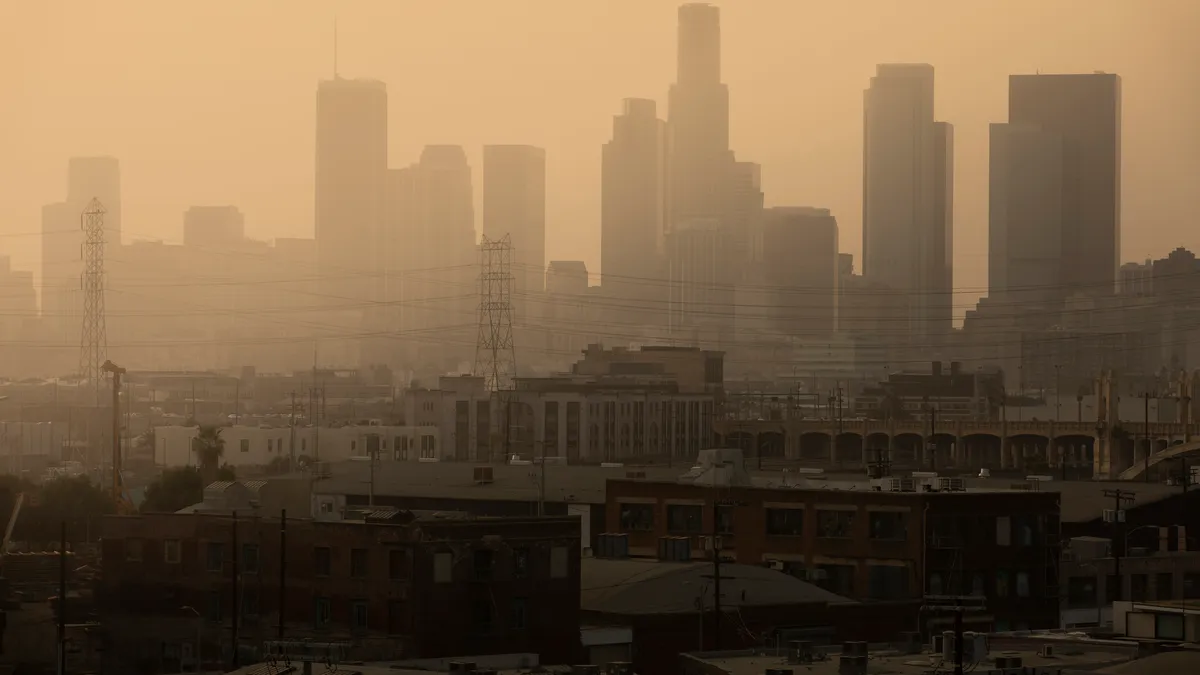Dive Brief:
- The Environmental Protection Agency is pushing to expand and upgrade the nation’s air quality monitoring networks by making $81 million in noncompetitive grants available to eligible air agencies.
- Another $2 million in funding will be available to help state, local, territorial and tribal agencies deploy and operate air quality sensors in low-income and disadvantaged communities, the EPA announced Feb. 16.
- The funding announcement comes after the EPA tightened the standard for soot pollution earlier this month, requiring states and counties to reduce pollution from power plants, vehicles, industrial sites and wildfires.
Dive Insight:
Air quality monitors measure pollution such as ground-level ozone, particle pollution and air toxics. Communities can then use this data to make decisions about how to protect human health and the environment, the EPA says. In many areas across the country, however, this information is not available. About two-thirds of counties in the U.S. lack air monitors, according to nonprofit environmental law organization Earthjustice.
The funding announced Feb. 16, which comes from the Inflation Reduction Act, will supplement annual funds that air pollution control agencies receive for activities under section 103 of the Clean Air Act. No cost-sharing will be required to access the funds. Eligible air agencies must apply by April 8 and will be contacted by EPA regional offices on how to do so. The EPA will host a webinar about the grants on Feb. 28.
The resources come as the White House looks to clean up the nation’s air. The EPA’s new soot pollution standard sets a maximum level of 9 micrograms of fine particle pollution per cubic meter of air. The previous maximum, established in 2012 by the Obama administration, was 12 micrograms.
The new standard “will save lives based on scientific evidence,” Doris Browne, president of the National Medical Association, said in a statement when the new standard was announced earlier this month. Fine particle pollution can work its way deep into the lungs, posing risks such as asthma and heart attacks.
Not everyone is happy about the new rule. “Compliance with the new standard will be very difficult because 84% of emissions now come from non-industrial sources like wildfires and road dust that are costly and hard to control,” said the U.S. Chamber of Commerce’s senior vice president for policy, Marty Durbin, in a statement. The National Association of Manufacturers called on federal lawmakers to reverse the standard, arguing that it is overly stringent and threatens investment in U.S. manufacturing.
Along with tightening the soot pollution standard, the EPA modified the design criteria for fine particle pollution monitoring networks to include a factor that accounts for how close monitors are to populations at increased risk of pollution-related health effects. “This will advance environmental justice by ensuring localized data collection in overburdened areas to inform future [national ambient air quality standards] reviews,” according to the EPA.
Air sampling will allow the EPA to identify counties that don’t meet the new standard, and states will be required to develop compliance plans for those areas within 18 months. The EPA expects 99% of U.S. counties to be able to meet the new standard by 2032, the earliest year states would need to comply.












